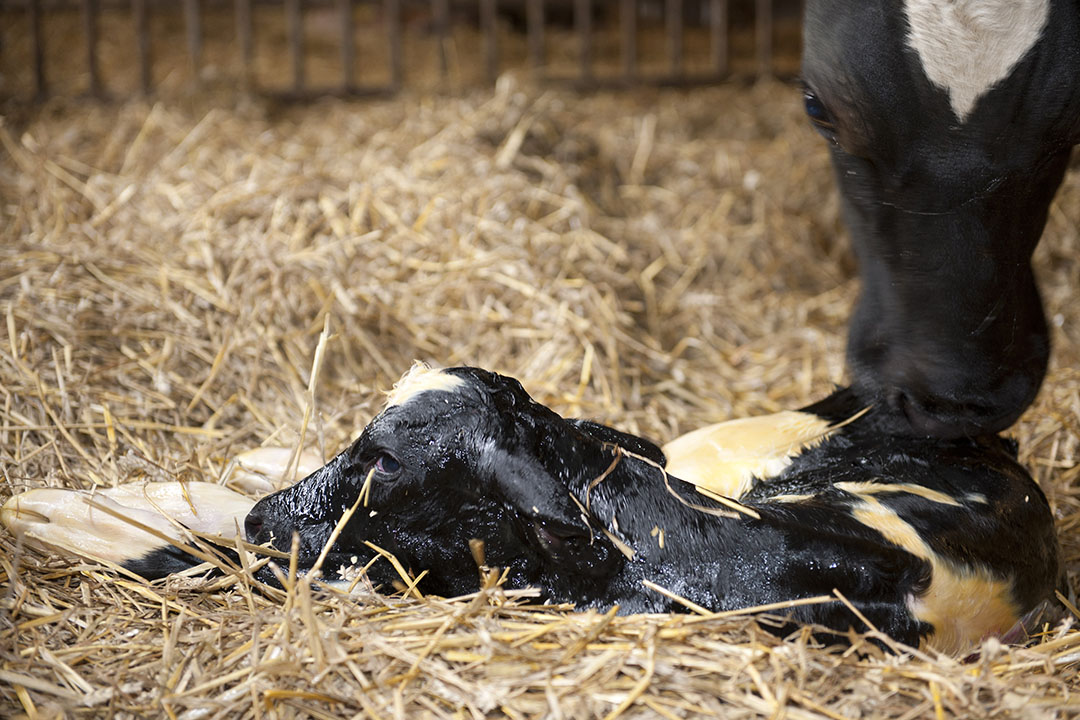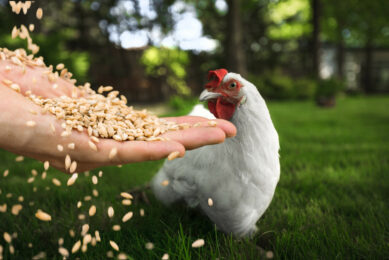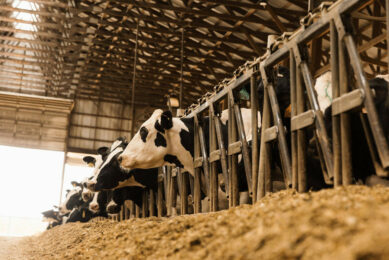Optimising the post-freshening period for dairy cows

The transition period, 21 days before through 21 days after calving, is a challenging time for the dairy cow. In this period, extra attention should be given to nutrient requirements and feed intake, and this goes beyond the need for calcium supplementation.
During the transition period, many cows experience insufficient overall nutrient reserves for recovery heading into the demands of lactation. This is due to depressed feed intake pre-freshening, fluids lost during freshening and ration changes. Delayed or inadequate post-freshening recovery can cost the dairy producer significantly in lost production or veterinary treatments resulting from metabolic challenges. Additional nutrient support for the post-freshening cow extends well beyond calcium and includes a variety of sources for optimal recovery.
Live yeast
Cows in the pre-freshening usually see a drop of up to 30% in feed intake. And this remains low in the first 24-48 hours after calving. This reduction in feed intake along with demands for lactogenesis puts the cow at a significant nutritional disadvantage heading into lactation. Low dry matter intake and a change in diet to higher concentrates can negatively affect gut microbiota and spark a cascade of negative health and performance challenges well into lactation. Live yeast helps buffer rumen pH by providing beneficial bacteria that work to keep lactic acid in check which can lead to improved feed intake resulting in a healthier rumen microflora environment leading to improved health and performance.
Magnesium
Magnesium is needed to metabolise dietary supplied calcium and therefore, critical to helping prevent hypocalcaemia. This allows a cow to best utilise all sources of calcium. Since the cow’s magnesium level is dependent on diet alone, a deficiency can easily occur when there is a natural drop in dry matter intake such as when a cow is close-up or immediately post-freshening.
Potassium
Cows do not have the ability to manage potassium levels in their blood stream and therefore rely on diet input, along with urine and faecal output, to regulate. Due to the tight homeostatic regulation of potassium, stores can quickly be exhaust post-freshening, leading to metabolic disorders like ketosis. Potassium is the primary electrolyte responsible for intracellular energy mobilisation and utilisation. In addition, it is responsible for the fluid balance within cells and for proper body function. In fact, the absence of adequate amounts of potassium (hypocalcaemia) affects smooth muscle contractions which can lead to issues related to retained placentas and potentially displaced abomasum. The combination of low feed intake and dehydration post-freshening leave the cow deficient and therefore supplementation is required to ensure recovery and sufficient support for cell activity.
Don’t overlook hydration
Challenges related to reduced feed intake pre- and post-freshening are well documented. What many producers tend to overlook is the fresh cow’s water intake and the negative effect dehydration has on post-fresh cows. Research shows that water intake helps improve feed intake. However, prior to freshening, feed and water intake are both shown to decline leaving the cow somewhat dehydrated even before she freshens. In this condition, extracellular fluids are lost as well – up to 53 litres according to studies. Add to this the fact that fluid and tissue loss during freshening can equal the weight of the calf and she now has an immediate demand to produce milk. This rapid loss in volume leaves an internal void, potentially allowing the rumen to move, resulting in a DA (Displaced Abomasum). Immediate water consumption not only rehydrates the cow, but also helps to add weight to the rumen, stabilising it.
Figure 1 – Effect of dehydration on milk yield.
Source: Am J Physiol Regul Integr Comp Physiol 280:R418-R427, 2001
Figure 1 shows the variation in milk yield when the cow is dehydrated vs. rehydrated. Water content is about 65% of the dairy cow’s body weight and 87% of fluid milk output. When calculating replacement fluids, it’s important to consider maintenance requirements, environment, production needs, and fluid losses due to calving, heat stress, sweat, sickness or other challenges. By way of example, to maintain normal cellular functions a 680kg cow requires 68 litres of water daily during thermal neutral conditions. Some of this water comes from their feed ration (10-30%) and the balance from daily water volume intake (usually 8 to 9% of their total body weight). For a lactating cow, each 38 litres of milk produced requires an additional 3.8 litre of water over maintenance requirements. The rumen serves as a reservoir that releases consumed water to the body fluid compartments via osmotic pressure. As cells require fluid for metabolism, electrolytes and other nutrients exert osmotic pressure in order to continuously supply the cells with fluid for normal functions. If the body does not have enough fluids, then the amount of nutrients transferred to the cells (for metabolism etc.) is greatly reduced. Therefore, managing the water content in the rumen is important for maintaining both normal rumen fluid volume as well as other body fluid reserves.
Osmolytes
Dehydration is problematic as fluid loss associated with freshening can be equivalent up to what she would normally drink in an entire day, and most cows do not drink well in the hours pre-freshening. Osmolytes are compounds that affect cellular water holding capacity and fluid regulation. Osmolytes function to help maintain cell volume and fluid balance thereby improving Cellular Energetics (assist transport of electrolytes). They also help cells maintain protein synthesis and cell division and help maintain gut integrity.
Also read: Nutrition is key for transition cows
Economic impact
A successful transition period is accomplished by a well-orchestrated nutrient repartitioning. However, any miscues surrounding the transition cow can cost the dairy producer hundreds if not thousands of dollars in either health related issues or long-term production losses. In fact, 70-80% of veterinary costs are incurred one to three weeks post-freshening and it is estimated that any incident that decreases milk production by little less than half a litre at the peak of lactation will decrease milk production by 227-454kg throughout lactation. Additionally, any incident that decreases milk production by 0.91-2.27kg at the peak of lactation will have a proportional greater decrease in milk production throughout lactation. The transition period should be the dominant area of focus for a dairy producer. With proper understanding of the relationship between transition cow physiology and proper nutrition, a dairy can realise big savings on treatment interventions, culling or lost production. Getting post-freshening cows back on feed quickly is important to recovery, optimising lactation potential and warding off many metabolic issues. Bottom line – physiology of the fresh cow changes dramatically at freshening and calcium alone doesn’t answer all the nutrient demands that these changes dictate. To optimise recovery outcomes, producers need to be sure to meet all the physiology demands with more nutrients than commonly discussed.












